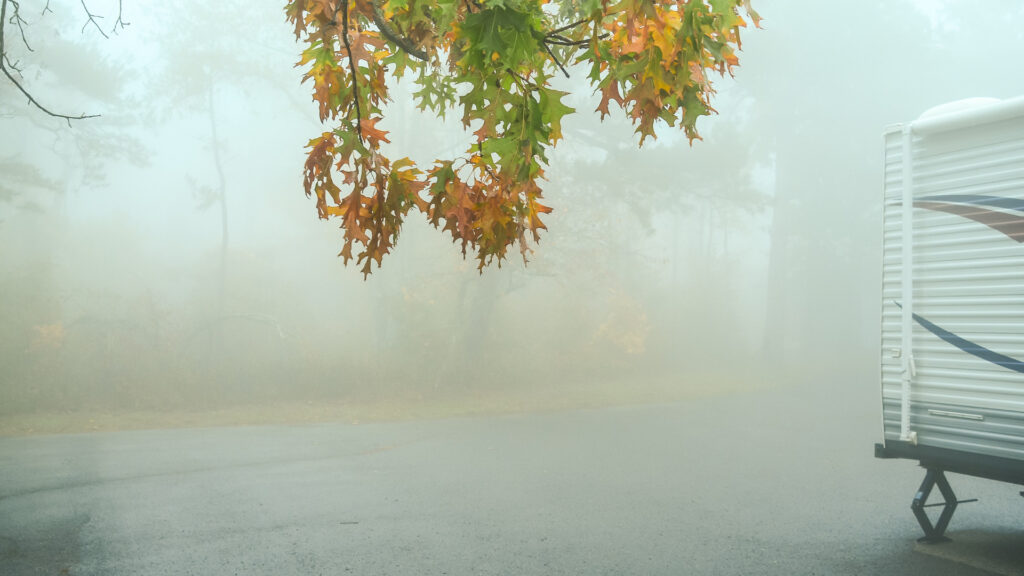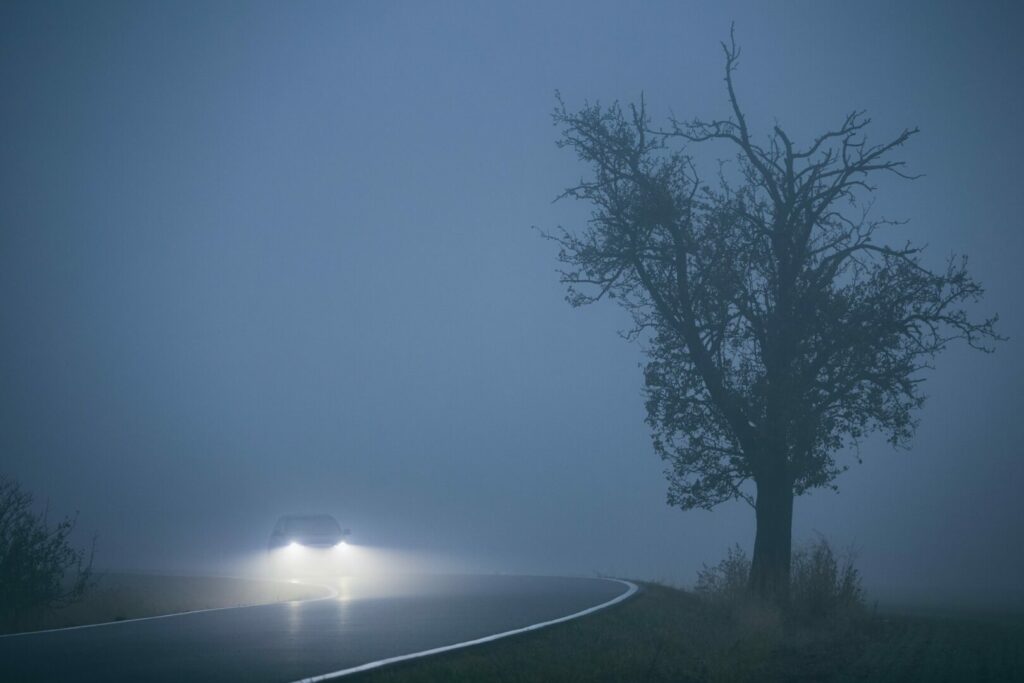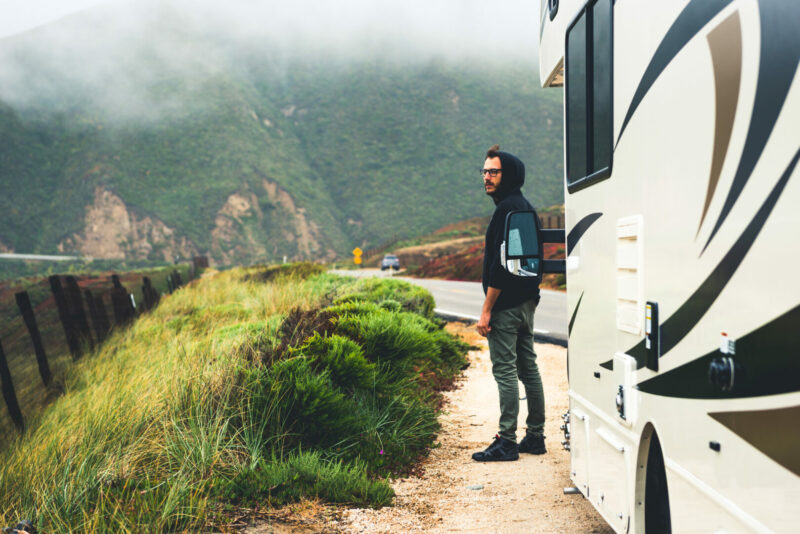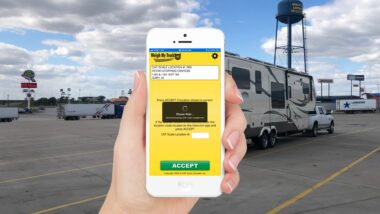Table of Contents Show
A cloud of fog can enhance the landscape and create incredible Instagram-worthy pictures. However, if you’ve ever driven through a thick cloud of mist, you know it’s not an ideal scenario. You’ll need to make a few adjustments when driving in fog, as it can significantly reduce your visibility.
Today, we’re sharing a few helpful pointers. When driving in fog, you should ensure you follow these tips. Let’s get started!
How Do You Drive in Thick Fog?
Driving in thick fog can be a scary situation. The first thing you should do is to reduce your speed and turn on your fog lights if you have them.
Reducing your speed will allow you more time to react, and your fog lights help increase visibility.
It would be best to minimize any distractions. Your full attention should be on the road and staying in your lane.
Watching the lines on the road can help you stay in the middle and avoid drifting into another lane or off the side of the road.
Outside conditions can cause condensation to gather on your windows. Adjusting your climate controls or rolling down the window can help you avoid condensation on your windshield.
If needed, use your windshield wipers to keep your windshield clear.
How Do You Drive in Fog Without Fog Lights?
If your vehicle does not have fog lights, you’ll want to use your low beam lights. Your high beam lights may increase visibility in most situations, but they do the opposite regarding fog.
When driving in fog, your high beam lights should make it even more challenging to see.
With your low beams on, reduce your speed. Speeding is never a good idea, but it’s a terrible plan if you’re driving in thick fog and can’t see very far.
There could be an animal or other object in the middle of the road, and reducing your speed gives you time to react to it.
Keep Reading: Have you ever wondered Is Highway Hypnosis a Real Thing? Click to find out!
When Driving in Fog You Should Always Do This
Fog often settles in valleys and isolated areas, making it feel like it appears out of nowhere. When you encounter fog while driving, how you respond should help you avoid an accident or serious situation.
When driving in fog, you should do these things to increase your safety. Let’s take a look!
Increase Distance and Slow Down
One of the first things you should do when driving in fog is to slow down and increase the distance between you and the traffic around you.
The slower you go, the more time you have to react to objects on the road or other drivers.
Keep your eyes on the road and use the white and yellow lines to stay in your lane. If traffic is approaching from the opposite direction, avoid looking into their lights and focus on the white line on the right side of the road.

Use Your Low Beams
Using your low beams will maximize your visibility and make it easier to see. Your high beams will shine into the fog and reduce your visibility. If your vehicle has fog lights, make sure to use them.
Pro Tip: Do You Need a Special License to Drive an RV? Depending on your RV type, you just might! Click the link to learn more.
Put on Your Defroster and Use Windshield Wipers
Fog is a thick cluster of water molecules floating in the atmosphere. Driving through them will result in moisture gathering on your windows, further reducing your visibility.
You can typically keep the moisture off your windshield by turning on your vehicle’s defroster. This helps regulate the temperature of your windshield and prevents water from gathering.
You can also get rid of moisture on your windshield by using your windshield wipers. You may want to use the intermittent setting as it will take time for the moisture to build up, so ensure you adjust it to dial in the right setting.
Watch for Other Vehicles’ Lights
Depending on the fog’s thickness, you may not see other vehicles on the road as quickly or easily. Some drivers may not have their headlights or fog lights on, making it difficult to spot them.
Be alert and mindful that there are likely other drivers on the road, whether you can see them or not. You should avoid the temptation to pass slower traffic when driving in fog.
You may not see an oncoming vehicle until it is impossible to avoid a head-on collision.

When Should I Use High Beams?
Your high beams will significantly reduce your ability to see when driving in fog.
There is practically never a situation when using your high beams while traveling in thick fog will be helpful.
You should rely on your low beams and fog lights when driving in fog. It would be best only to use your high beams once the air is clear.
When the Fog Is Really Thick, Pull Over
When in doubt, pull over. Visibility can be next to zero in extremely thick foggy situations. It is not safe to drive when you cannot see.
An ideal situation would be to exit the highway and find a safe place to park. However, if you cannot exit, pull completely off the road, turn off your lights, set the emergency brake, and take your foot off the brake pedal.
While it might seem counterintuitive to turn off your lights, it’s the safer option. If you have your lights on, you might draw other drivers towards you. While they believe the road is in your direction, your lights are unknowingly leading them off the road. Only have your hazard lights on.
You don’t want to put yourself and other drivers at risk by driving in a dangerous situation. Safe driving practices are essential, whether in fog, rain, or snow.
It’s better to arrive at your destination late than not at all.
Keep in Mind: Should you drive your RV when it’s windy? Is it safe? Let’s dive in!

Is Driving in Fog Safe?
Driving in fog and other weather conditions is never an ideal situation. The tips we’ve shared can increase your safety and help ensure you arrive safely at your destination.
Know your limits and trust your instincts. If you don’t feel safe driving, then don’t. Find a safe place to pull over and wait out the fog if possible.
It could be a matter of minutes or hours before the fog dissipates. It’s wise to check the weather conditions before heading out on a trip. That way, you should avoid driving in fog or other inclement weather.
Have you ever had a bad experience driving in fog?







Pull over, and turn off your lights? I’d put on my flashers so other traffic could know I was there!
Pulling over is a death trap, for both. Find am exit!